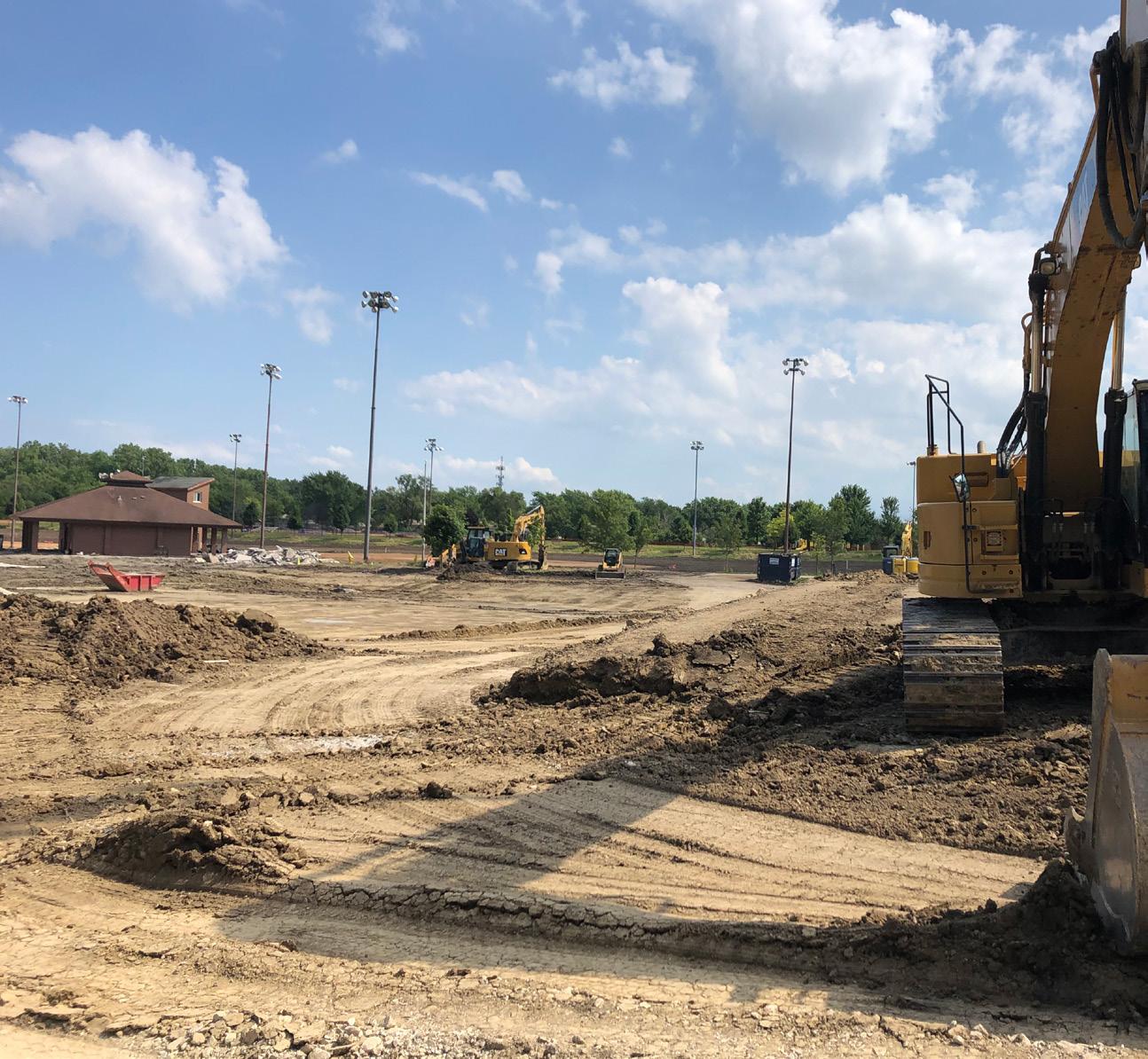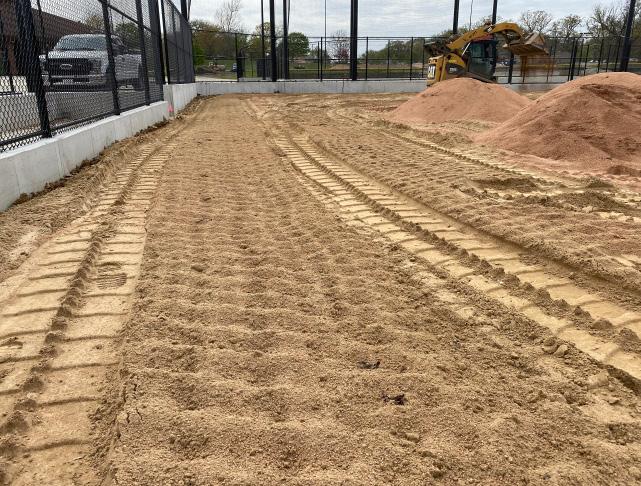
1 minute read
ACCOMPLISHMENTS
This sports complex was originally constructed in the 1970’s. Over time, the ball fields were experiencing washout of infield soil mix, pavement deterioration, excessive slope issues between the fields and the concession building, drainage issues that impeded play on the fields, and settlement of the outfield on the northeast field. The washout, pavement, and slope issues were addressed through a full demolition, regrading, and new construction of the complex including perimeter retaining walls for each of the fields. The drainage was improved through the installation of new main-line storm sewer, underdrains throughout the playing surfaces, and new sewer outfall installation at an existing stormwater detention basin.

Unique to one particular field is the presence of a very deep layer of soft peat material commencing at the infield and extending across centerfield to beyond the right field foul line. Poor drainage in this area exacerbated the problem and this field experienced settlement of the outfield playing surface of over three feet. This condition severely impacted play on this field. The challenge was to rectify the field conditions, but not significantly add any load or weight to this area of the field. Doing so would have caused further settlement of the peat.
The solution was a combination of grading and drainage. In review of some site history, including discussions with residents and athletes, it appeared that settlement of the field had not continued to advance over the previous several years. Therefore, the elevation of the outfield was used as a controlling elevation for the rest of the redevelopment, which had impacts across the site. Critical to achieving a sustainable field was the addition of suitable drainage to provide a means of stormwater management across the field and reduce the amount of water infiltrating to the peat layer. The result is the creation of sustainable ball fields that minimize down time following rain events for the benefit of the community and its residents.




